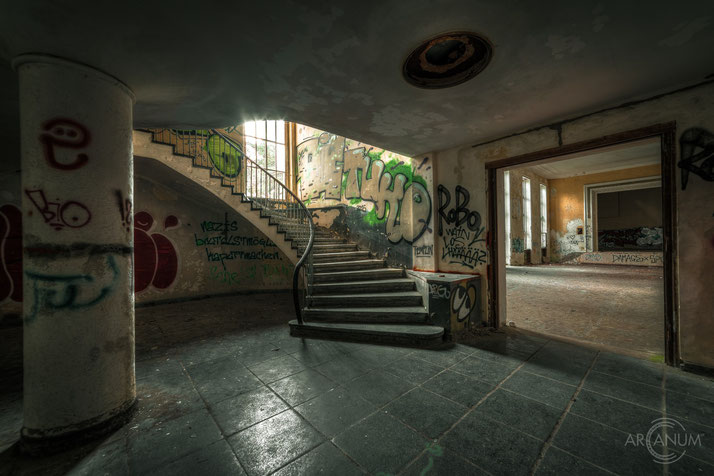The City in the Woods
After the end of World War II, a site near a small village in the forests of Brandenburg became important within the Western forces of the Soviet Union.
From 1952, a barracks town was constructed within the woods, that eventually was capable of housing 15.000 people, including military personnel and their families. The garrison was a newly built - planned, constructed and paid for by the East German government. It was self-contained and off-limits to non-essential personnel, and it contained shops, offices, a theater, a gym, schools and medical facilities. During the Cold War, it was the third largest Soviet base inside East Germany.
Units stationed at the base included: the 25th Armored Division of the 20th Guards Combined Arms Army; the 162nd Panzerregiment (Armored Regiment), the the 803rd Schützenregiment (Rifle Regiment). Also stationed here was the 1702nd Anti-aircraft missile regiment.
On the premises, there was also a large communications bunker of the Soviet ground communications network. Although within the confines of the garrison, this comms center had nothing to do with the procedures of the other units there.
In the late 1950s and early 1960, Soviet R-5 nuclear missiles targeted at Great Britain and France were stationed in the garrison. This was a reaction to the deployment of U.S. Thor and Jupiter missiles to Europe in 1957. The Soviet R5-M systems were aimed at Thor Systems in England.
Between 1983 and 1988, parts of the area were used to store SS-20 nuclear missiles. This task was performed by a mobile missile technical base so secret that only its field post number became known. The missiles were there stored for the 152nd Soviet missile brigade.
After the withdrawal of the last Soviet Army troops in 1994, the military town was partly demolished, with the remainder allowed to decay back into the woods. Due to the many ammunition residues in the soil, access to parts of the site is restricted, as the areas can be life-threatening.






































































